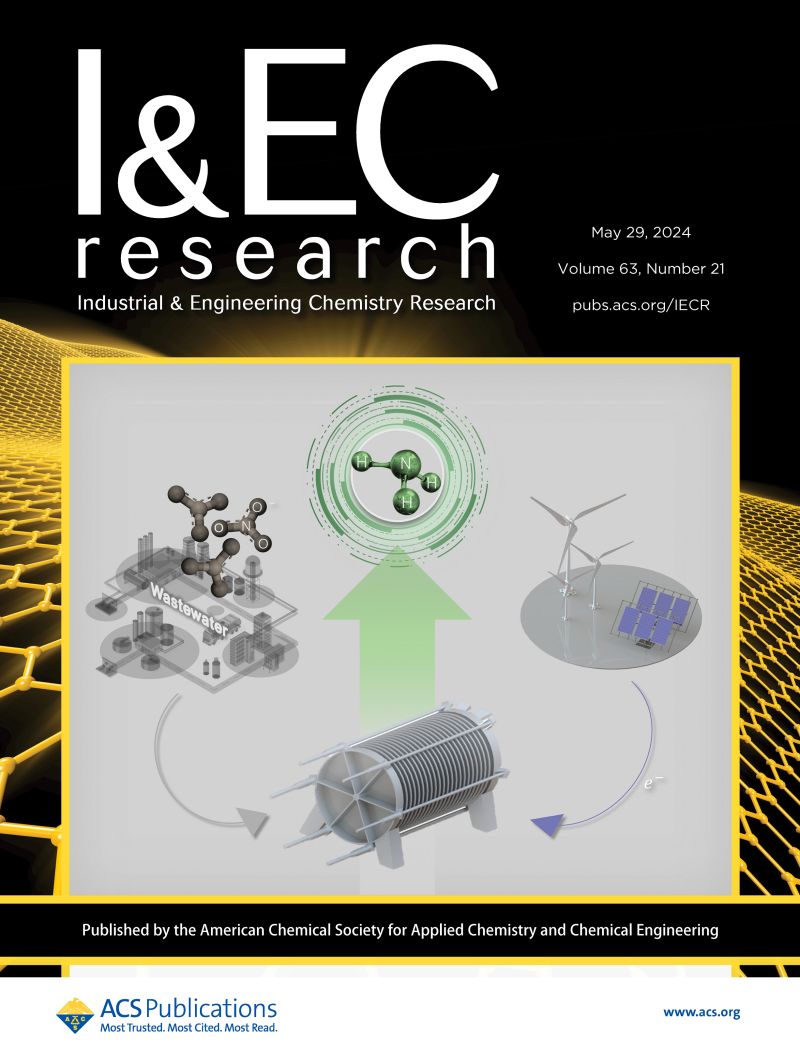Screening of Binder Materials for Ag-Based Gas Diffusion Electrodes for CO2 Conversion to CO
IF 3.9
3区 工程技术
Q2 ENGINEERING, CHEMICAL
引用次数: 0
Abstract
Electrochemical CO2 reduction (CO2R) to chemicals and fuels has made tremendous progress since the introduction of gas diffusion electrodes (GDEs) to overcome mass-transfer limitations and enable industrial-scale current densities. The advancement in the field, however, has come with new challenges that are related to the stability and degradation of the GDE due to flooding issues, which currently hinder the scale-up. Here, we investigated the effect of six different binding materials (Nafion, polytetrafluoroethylene, Fumion, Pention, poly(vinyl alcohol), and polypyrrole) on the stability and performance of Ag-based GDEs for CO2R to CO in alkaline media. All binders show a decrease in the Faraday efficiency (FE) of CO and increase in hydrogen evolution reaction over time. The most hydrophilic GDE based on polypyrrole can uphold a higher FE of CO for longer times, which is contrary to a common belief that low wettability is required for long-term stability. By using a range of tools (SEM–EDX, SEM–FIB, X-ray diffraction, and contact angle measurements) for the postelectrolysis characterization of the GDEs, we show that the performance loss is related to flooding, bi(carbonate) precipitation, and catalyst agglomeration. These results contribute to a better understanding of the stability issues in GDE-based CO2 electrolyzers.

银基气体扩散电极CO - 2转化用粘结材料的筛选
自从引入气体扩散电极(gde)来克服传质限制并实现工业规模的电流密度以来,化学物质和燃料的电化学二氧化碳还原(CO2R)取得了巨大进展。然而,该领域的进步也带来了新的挑战,这些挑战与GDE的稳定性和由于洪水问题而导致的降解有关,这些问题目前阻碍了该领域的规模扩大。在此,我们研究了六种不同的结合材料(Nafion、聚四氟乙烯、Fumion、Pention、聚乙烯醇和聚吡咯)对银基GDEs在碱性介质中CO2R到CO的稳定性和性能的影响。随着时间的推移,CO的法拉第效率(FE)降低,析氢反应增加。基于聚吡咯的最亲水GDE可以在较长时间内保持较高的CO FE,这与人们普遍认为的低润湿性是长期稳定性所必需的相反。通过使用一系列工具(SEM-EDX, SEM-FIB, x射线衍射和接触角测量)对gde进行电解后表征,我们发现性能损失与水淹,bi(碳酸盐)沉淀和催化剂团聚有关。这些结果有助于更好地理解基于gde的CO2电解槽的稳定性问题。
本文章由计算机程序翻译,如有差异,请以英文原文为准。
求助全文
约1分钟内获得全文
求助全文
来源期刊

Industrial & Engineering Chemistry Research
工程技术-工程:化工
CiteScore
7.40
自引率
7.10%
发文量
1467
审稿时长
2.8 months
期刊介绍:
ndustrial & Engineering Chemistry, with variations in title and format, has been published since 1909 by the American Chemical Society. Industrial & Engineering Chemistry Research is a weekly publication that reports industrial and academic research in the broad fields of applied chemistry and chemical engineering with special focus on fundamentals, processes, and products.
 求助内容:
求助内容: 应助结果提醒方式:
应助结果提醒方式:


